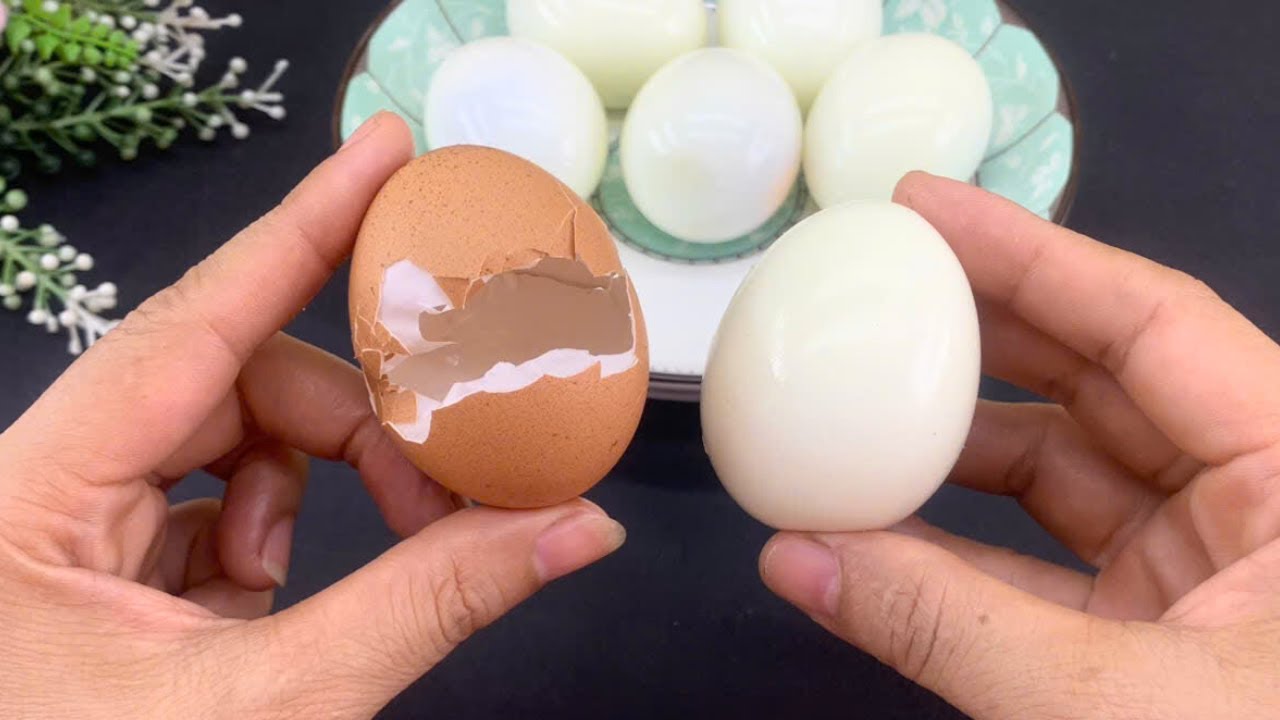
Boiling eggs might seem like a simple task, but getting them just right—especially making them easy to peel—can be frustrating. If you’ve ever ended up with pockmarked or hard-to-peel eggs, this method will change your game in the kitchen, leaving you with perfectly smooth, non-sticky eggs every time.
Perfect Boiling Method for Easy-to-Peel Eggs:
- Start with the Right Eggs:
- Older eggs tend to peel more easily than fresh ones because the pH level of the egg whites increases as they age, which helps them separate from the shell. If you plan in advance, buy your eggs a week before you need to boil them.
- Use the Right Amount of Water:
- Place your eggs in a single layer at the bottom of a pot. Cover them with an inch or two of cold water. Starting with cold water helps heat the eggs slowly, preventing the shells from cracking.
- Add Vinegar and Salt:
- Add a teaspoon of vinegar and a pinch of salt to the water. The vinegar helps to break down the shells, making them easier to peel. Salt increases the boiling point of water and helps prevent the egg from cracking by solidifying the proteins faster on contact with hot water.
- Bring to a Boil:
- Put the pot on high heat and bring the water to a full, rolling boil. As soon as the water reaches a boil, turn off the heat and cover the pot with a lid.
- Let the Eggs Sit:
- Leave the eggs in the hot water for about 12-15 minutes. The exact time can depend on your preference for doneness and the size of the eggs. For firmer yolks, leave them a bit longer; for softer yolks, a bit less.
- Prepare an Ice Bath:
- While the eggs are sitting, prepare an ice bath by filling a large bowl with ice and water. The cold bath will shock the eggs, stopping the cooking process and contracting the egg inside the shell, which makes peeling easier.
- Cool the Eggs Quickly:
- After the resting time, transfer the eggs to the ice bath with a slotted spoon. Let them chill for at least 5 minutes.
- Peel the Eggs:
- Gently crack the eggshells by rolling them on a hard surface. Start peeling from the broader end, which often contains an air pocket, making the initial break easier. The shell should come off in large, easy strips, leaving you with smooth, non-sticky eggs.
Conclusion:
With this method, you can consistently boil eggs that are easy to peel and perfectly cooked. The addition of vinegar and salt, along with the right cooling technique, ensures that your eggs will come out smooth and ready for any recipe or snack. Enjoy your hassle-free hard-boiled eggs!




